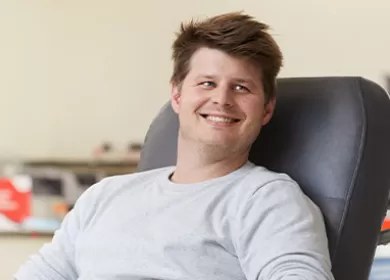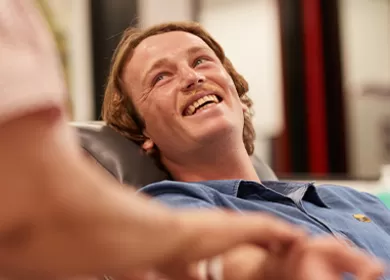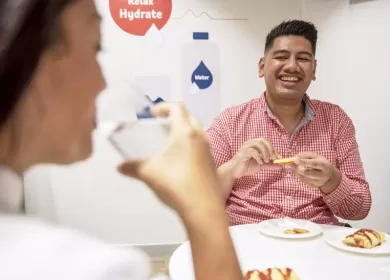Transforming transfusions: The remarkable life of Dame Janet Maria Vaughan
Though not a household name quite like Albert Einstein or Marie Curie, Janet Vaughan is responsible for creating national blood banks, saving countless lives and launching a new era of blood transfusion and medical practice that we know today.
Early life and education
Janet Vaughan was born the eldest of four children in 1899 Bristol, United Kingdom. Initially educated by a governess then sent to school at 15, Vaughan was a veracious reader and decided to take the entrance exam for Oxford. After failing the test twice, Vaughan passed on her third try and started studying medical science at Sommerville College, one of four women’s colleges at Oxford.
During her clinical training at University College Hospital, she worked in London's slums and saw first-hand the effects of poverty on health, sparking her interest in blood. She continued her research in blood diseases but was often overlooked for medical expertise because of her gender. In 1934 before the birth of her first child she published The Anaemias, a pioneering book on haematology. An invitation to set up a department of pathology at Hammersmith Hospital saw her thrive in the field.
London Blood Transfusion Service
Vein to vein transfusions were seen as successful during World War I for patients that received blood, but even the most efficient field hospitals could only transfuse fifty patients a day. Comradery fell after the war, and voluntary donors were difficult to locate and an organised system of blood donation faltered.
Unhappy with the process of paid donors and painful extraction (where the vein was opened to extract blood) Percy Oliver and his wife set up the London Blood Transfusion Service. Percy, a middle-ranking civil servant, and his wife Ethel Grace, an honorary secretary to the Camberwell Division of the British Red Cross, worked from their home. Using index cards of healthy and willing voluntary donors, a single phone was manned day and night to relay requests from hospitals for blood donors — a lot’s changed since then!
Only four voluntary donors were signed up in the first year, and they were only called upon to donate once. However, this number began to grow, and the system was adopted around the country in the following years.
“Start bleeding”
Pre-war preparations had begun by 1938 — gas masks were given to children and residents were urged to plant vegetables, but when it came to collecting and storing blood there was no such preparation. This was a major concern for Vaughan, who had studied the need for blood during the Spanish Civil War and noted with fascination the work of Catalan physician Durán-Jordà who used a blood mobile to transport blood to the front line in a converted fish van.
Vaughan requested permission from her medical school dean to research how best to collect and store blood to prepare for what she believed would be an upcoming war. She was granted permission and given £100 for supplies. That would work out to be a bit over $12,500 if it was in Australia in 2020, which wouldn’t go very far!
In April 1939 she set up regular meetings between a group of doctors, pathologists and Percy Oliver in her Bloomsbury flat to plan the Emergency Blood Transfusion Service. They enlisted voluntary donors, collecting their information and blood type to be ready for when the war came, as well as the use of ice cream trucks for the safe delivery of blood.
In September 1939 Vaughan received a short telegram from the Medical Research Council: “Start bleeding”. Medical staff and volunteers sprang into action, and two days later war was declared with Germany.
Throughout the war, blood depots in Slough, Luton, Maidstone, and Sutton along with the Army Blood Transfusion service gathered, supplied and eventually conducted their own transfusions. Ice cream trucks from the Slough depot (driven by volunteers through raids, many of whom were female) would often not need to be called up by the hospitals. Instead, they’d hear and watch where the bombs fells and anticipate the need for blood before the requests for supplies came through.
By the war’s end, a supply depot in South West London (one of the few who kept records on the number of donations during this time) showed that in 1945 they had distributed 22,397 bottles of blood. The Army Blood Transfusion Service held an impressive record too, collecting 1,300 donations a day.
A new era of donation
Modern collection, transportation and processing of blood donations have come a long way since the use of ice cream trucks in war-time England (you can find out more about the journey of blood here). But our processes wouldn’t be what they are today without pioneers like Janet Vaughan. Her lasting legacy can be seen every day at Australian Red Cross Lifeblood as we deliver one of the world’s safest blood supplies to patients across Australia through the generosity of volunteer donors.




